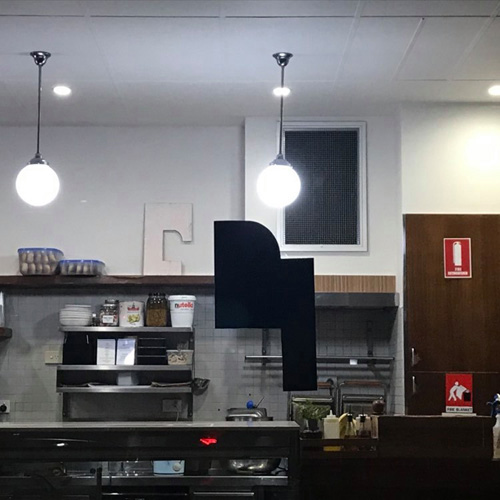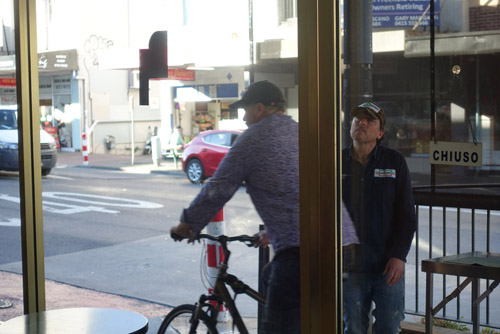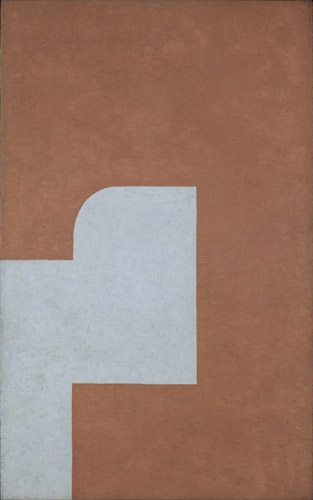|
|
Margaret Roberts Door 2020 appropriates Wladyslaw Strzemiski's 1929 painting, Architectonic Composition #12c (1) and the Leichhardt coffee bar that I frequent, Bar Sport. It separates the two shapes that make up the painting, locating one cut-out in floor tape on the outside of the front window, and the other cut in plywood located 5 metres away on the shelf inside, with the coffee bar in between. It invites anyone standing outside looking in to imagine their eye throwing the floor-tape shape across the distance of the coffee bar to neatly fit the negative space of the plywood shape on the shelf, re-establishing the unity of the original painting. It is a type of art-sport that matches the Italian football on the large screen inside that gives the bar its identity, as well as incorporating Strzeminski's studies of the eye's visualising function and of unity in painting. Door was prompted by an invitation to make a work for DoorKunst. Translated into English as 'through art', DoorKunst is a collection of artwork made for the COVID-19 era through its incorporation of physical distance and transparent screens. This invitation came as a cue to open up one of Strzemiski's Architectonic Compositions, the Unistic paintings he made in the 1920s and 30s, each composed of two shapes that are equal not in area so much as by neither being figure or ground. They seem to me to be made to be cut open along the line joining the two shapes in each painting so that the actual space in which the paintings are located can be allowed inside. I began working with Strzeminski's Architectonic Compositions in 2013, because their 'non-objective' withdrawal from representing the appearance of the physical world made them more easily understood as occupying it in new ways instead. His shapes are devised using ideas of 'time-space rhythm' he developed with his artist-partner Katarzyna Kobro, and that they saw as engaging with the physical and social world in new ways. This open-ended intention may be what makes the shapes endlessly interesting to work with, using materials, contexts and conventions that differ from what may have made sense of them in their own time. It also may allow them to be used as a remnant-language and as a link to another possible future we could have had. |
|||||||||||
Bar Sport proprietor, Joe, checking out what he had agreed to. |
|
||||||||||||
1. Wladyslaw Strzeminski, Kompozycja architektoniczna 12c [Architectonic Composition 12c], 1929. Oil on canvas. 96 x 60 cm. |
|||||||||||||
|
|||||||||||||


